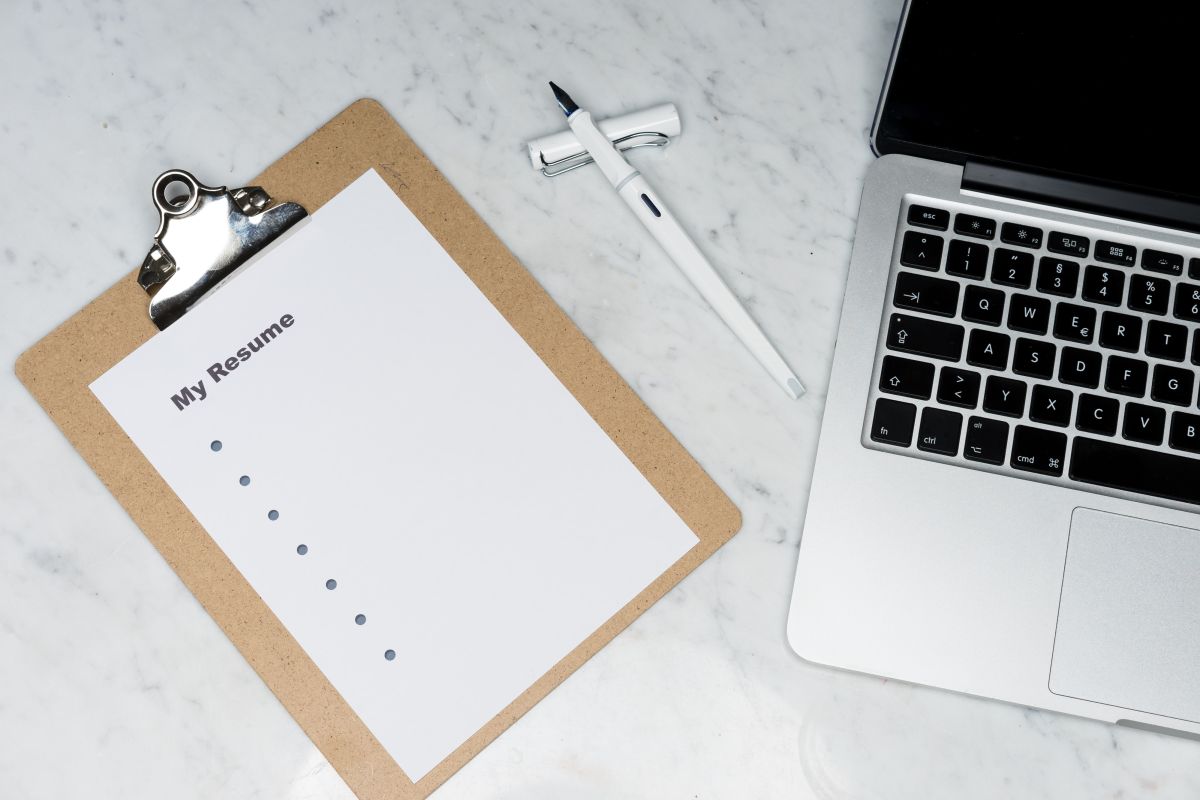“To err is human...”, yet to accept our mistakes and offer an apology is a daunting task for many of us. And, it becomes all the way more complicated when we talk about mistakes made in professional spaces. One also needs to understand when and how to apologize at work.
Also see: Apology Letter Format
If mistakes happen, fix the situations with appropriate apologies. An apology can transform the clumsiest moment into a gracious gift (Margaret Lee Runbeck). It can turn a negative experience into a positive one. But it needs to be genuine and well-crafted.
What is an Apology letter?
An apology letter is a written communication that expresses remorse, regret, and a sincere desire to make amends for a mistake, offense, or wrongdoing.
It is a formal way of acknowledging and accepting responsibility for one's actions and the impact they have had on others.
There are commonly used in personal, professional, and formal settings to convey an individual's genuine apologies and willingness to address the consequences of their behavior.
How to Write an Apology Letter
Writing an apology letter can be a sensitive and thoughtful process. Here is a step-by-step guide on how to write an effective one:
Start with a salutation: Begin the apology letter sample with a formal salutation, addressing the recipient appropriately. If you have a personal or professional relationship with the person, use their name (e.g., "Dear [Name]").
If you don't know the person well, use a more formal greeting such as "Dear Sir/Madam" or "To whom it may concern."
Express remorse and acknowledgment: Clearly state the purpose of your letter, acknowledging the mistake or offense you committed. Take responsibility for your actions and express genuine remorse.
Use phrases like "I am writing to apologize for..." or "I wanted to express my sincere apologies for..."
Be specific and own up to your mistake: Clearly state the specific action or behavior you are apologizing for. Provide details about what happened without making excuses or shifting blame.
Take full responsibility for your actions and avoid minimizing or downplaying the impact of your behavior.
Show empathy and understanding: Acknowledge the impact your actions had on the recipient. Show empathy and understanding by recognizing their feelings and any inconvenience, hurt, or disappointment you may have caused.
Use phrases like "I understand that my actions made you feel..." or "I can imagine how much this must have affected you..."
Offer a sincere apology: Use direct and sincere language to apologize. Clearly state that you are sorry for your actions and express genuine regret.
Use phrases such as "I deeply apologize," "I am truly sorry," or "Please accept my sincere apologies."
Explain yourself (if necessary): If appropriate, provide a brief explanation of the circumstances that led to your mistake or offense.
Be honest and transparent, but avoid using explanations as a way to justify your actions. Remember that the focus should be on the apology, not the explanation.
Make amends and propose solutions: Express your commitment to making amends or rectifying the situation.
Offer specific steps you will take to address the issue and prevent similar mistakes in the future.
This shows that you are willing to learn from your mistake and take concrete actions to make things right.
Request forgiveness: Humbly request forgiveness from the recipient. Let them know that you genuinely hope they can find it in their heart to forgive you.
Avoid placing any pressure on them to forgive immediately or on your terms. Respect their feelings and give them space to process the situation.
Close the letter: End the letter with a polite and respectful closing. Use phrases like "Thank you for your understanding," "Once again, I apologize," or "I hope we can move forward from this."
Sign off with a formal closing such as "Sincerely," or "Yours sincerely," followed by your name.
Proofread and revise: Before sending the letter, carefully proofread it for any grammatical or spelling errors. Ensure that the tone remains sincere and respectful. Make any necessary revisions to improve clarity and coherence.
Remember, every situation is unique, so tailor your apology letter to the specific circumstances and the relationship you have with the recipient. Keep the letter concise, focused, and sincere.
The goal is to genuinely convey your remorse and willingness to make amends, promoting understanding, and potentially rebuilding trust.
What not to Include
Here are some things to avoid in this Apology letter format:
Avoid excuses and defensiveness: Do not make excuses for your actions or try to shift the blame onto others.
Taking full responsibility means accepting that you made a mistake without trying to justify or minimize it.
Don't use vague language: Be specific and clear about what you are apologizing for.
Vague statements or generalizations can undermine the sincerity of your apology and leave the recipient feeling confused or unsatisfied.
Avoid insincere apologies: Empty apologies without genuine remorse or willingness to change are not helpful.
Ensure that your apology comes from a place of true understanding and empathy. Superficial or insincere apologies can further damage the relationship.
Don't minimize the impact: Acknowledge and validate the feelings of the person you have hurt.
Avoid downplaying or dismissing their emotions or the consequences of your actions. This shows respect for their experience and helps rebuild trust.
Avoid excessive self-blame: While taking responsibility for your actions is important, excessive self-blame can be counterproductive.
It may make the recipient feel obligated to console or reassure you instead of focusing on their own feelings and needs.
Don't make promises you can't keep: Be cautious about making promises or commitments you may not be able to fulfill.
If you offer solutions or propose changes, ensure that they are realistic and within your control.
Avoid lengthy justifications: While providing context or an explanation can be helpful, be mindful of the length of your letter.
Avoid going into excessive detail that may distract from the main purpose of the apology or give the impression that you are trying to avoid responsibility.
Don't rush the process: It require time and reflection. Avoid rushing the letter to meet a deadline or to simply "get it over with."
Take the time to genuinely process your emotions, understand the impact of your actions, and craft a thoughtful apology.
Avoid passive-aggressive or sarcastic remarks: Maintain a respectful and sincere tone throughout the letter.
Avoid using sarcasm, passive-aggressive language, or any remarks that could be interpreted as insincere or mocking.
This can exacerbate the situation and hinder the chances of reconciliation.
Don't demand forgiveness: While it is appropriate to express your desire for forgiveness, demanding or expecting immediate forgiveness is not appropriate.
Forgiveness is a personal process, and the recipient needs time to heal and decide when and if they are ready to forgive.
By avoiding these pitfalls, you can ensure that your apology letter maintains its sincerity, demonstrates genuine remorse, and promotes understanding and resolution.
Tips for Writing an Effective Apology Letter
-
Ask for forgiveness
Cartoonist Lynn Johnston said that an apology is the superglue of life. It can repair just about anything. A sincere 'I am sorry' works like a charm. Seeking forgiveness can send across a clear message that you are sincerely sorry. However, avoid melodrama. ? -
Accept your mistake
It is important to own the mistake to show your sincerity. It can be a little difficult in some situations. However, it is the essence of a genuine apology. -
State what happened
Sometimes it seems a redundant thing to do, yet it is very important. It ensures the wronged person that he/she was heard properly and that you are aware of the whole situation. Describing what happened also reiterates your stand on the whole situation. However, avoid being defensive and let the person know that you are genuinely concerned. -
Provide solution
Providing a well-thought-out plan of action to resolve the issue is important. It calms down the wronged person, and he/she feels that you actually worked towards providing a solution for the problem. -
Provide assurance
To maintain a healthy professional relationship, it is important to provide assurance that similar mistakes will not be repeated again. Describe the steps taken by you to avoid similar situations in the future. Also, state if similar situations arise, how you intend to solve them in a more effective manner.
Apology Letter Samples
Check out the various lApology etter samples that can be used in work situations.
Apology letter Sample to boss:
Sub: Apology letter
Dear Mr./Ms./Mrs. {Recipient's Name},
Please accept my sincere apology for sending wrong reports to the client. I understand this has caused a lot of inconvenience to the client and our company.
I cannot defend my actions, but I want to tell you that I am handling four projects simultaneously. I got confused and mistakenly sent the wrong reports. I am truly sorry for such a lousy mistake.
I want you to know that I have already apologized to the client personally and sent the correct reports. I have also arranged a meeting with the client to eliminate any chance of miscommunication about our reports.
Kindly suggest if any other remedial step should be taken from our end.
I understand your disappointment, and I am truly sorry. I can assure you that this mistake will never be repeated in the future.
Yours Sincerely,
{Your Name}
Apology letter Sample for inconvenience:
Sub: Apology letter
Dear Mr./Ms./Mrs. {Recipient's Name},
I want to apologize for missing our appointment on Saturday. It was very unprofessional on my part to not inform you on time. I would like you to know that I was caught up in an emergency situation with another patient.
I know how busy you are, and missing an appointment would require a lot of planning on your part. I totally respect your time. I want to assure you it will not happen again. I usually make sure my patients are informed if I am unable to make an appointment. I regret that I could not inform you ahead of time. I am very sorry if I caused you any trouble.
Please let me know if I can do anything else to help you. You have your next appointment on coming Thursday. I look forward to seeing you then. If you need to visit me before that, please let me know exactly when you would like to schedule your appointment.
Thank you for your patience. Should you have any concerns, please contact me.
Yours Sincerely,
{Your Name}
Apology letter for a mistake:
Sub: Apology letter
Dear Mr./Ms./Mrs. {Recipient's Name},
Thank you for contacting us about your faulty LED television set. We are very sorry that the item {Order no.} that you received on {Specific Date} was defective and did not function as promised. We sincerely regret the inconvenience caused by this.
All our products undergo several stages of quality checks before we ship them. We will surely carry out a formal inquiry to examine how your product slipped past our quality measures.
We have already shipped you a new LED television, which should arrive at your registered address in 3-5 business days. Please return the defective television set in the enclosed box when you receive the new one.
We will investigate at which level the quality check failed. This will help us improve our quality check process.
We have also sent you a coupon for 30% off on your next purchase in hopes of compensating for the inconvenience.
Please feel free to contact us with any further concerns.
Yours Sincerely,
{Your Name}
Apology letter Sample to a client
Sub: Apology letter
Dear Mr./Ms./Mrs. {Recipient's Name},
Please accept my sincere apology on behalf of our company {Company Name}. We are sorry to learn that your experience with the delivered software did not meet your expectations. Our development team should have followed the exact guidelines and sought your validation before making any change in the approved plan. We understand that it is annoying for you.
We take full responsibility for the situation and offer to provide you with a newer version of the software without any extra cost borne by you as a gesture of gratitude from the company. Our team will get in touch with you soon to discuss the changes you would like to make in the current version.
We have also put new guidelines in place for our development team to avoid such situations in the future. We want to assure you that this type of situation will never happen again. You are a valued client, and we hope to continue the business with you in the future.
If there are any other issues that need to be addressed, please don't hesitate to contact me personally or any member of the team.
Yours Sincerely,
{Your Name}
Apology letter to a colleague:
Sub: Apology letter
Dear {Recipient's Name},
I am really sorry for my behavior this morning. I did not mean to offend you when I mentioned that you take longer breaks than allowed. I just wanted to inform you as a friend in case you were not aware. I did not want you to get pointed out by the team lead.
I realized why you lost your calm. I should have spoken to you about this personally and not in front of other colleagues. I am really sorry that I also lost my temper in the spur of the moment. There is no explanation for my behavior. I just want you to know that I really regret my actions.
I know it definitely has damaged our friendship and working relationship a little. However, I hope to find a way to fix this situation. Being teammates, we need to have a good working relationship between us to make our project a success.
I hope this letter would be of some help in initiating a conversation between us. Please accept my sincere apologies for my actions. I promise you that I will never behave in such a manner again.
Yours sincerely,
{Your Name}
Apology letter to a customer:
Sub: Apology letter
Dear Mr./Ms./Mrs. {Recipient's Name},
I want to extend my sincere apologies on behalf of {Your company name} for the poor customer experience that you had with {Name of the representative}, our customer service representative.
I was informed that our representative was unable to provide a satisfactory answer to your query and hung up the phone while transferring the call to a supervisor. I understand your frustration as you had to call again to connect to a supervisor.
At {Company name}, we ensure 100% customer satisfaction, and we are really sorry for letting you down. I would like you to know that we provide training to all representatives on how to properly handle our customers’ issues, including how to escalate problems that they are unable to assist with. We are going to take steps to ensure that such situations are taken care of in a better way.
We have decided to hold a mandatory review session weekly to make sure our representatives are aware of the proper procedure for transferring calls.
I really appreciate you brought this issue to our attention. Your feedback is valuable and will help us to improve our operations.
Should you need any assistance in the future, please do not hesitate to contact me directly.
Yours Sincerely,
{Your Name}









